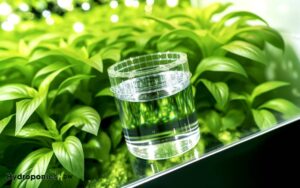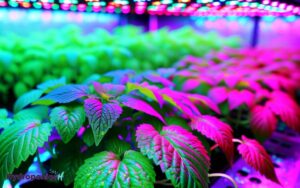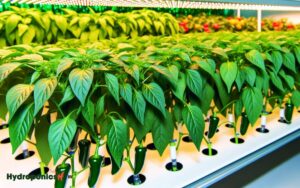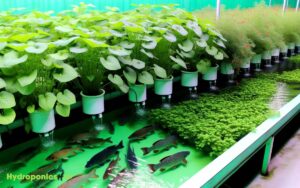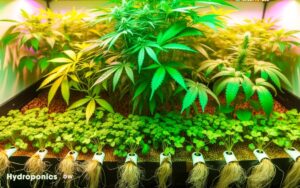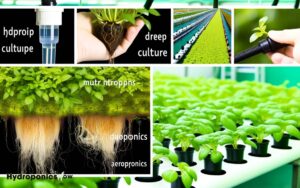Top 3 Types of Tomatoes to Explore for Hydroponic Gardens
Hydroponic systems support efficient growth of various tomato varieties, including Heirloom, Cherry, and Beefsteak tomatoes.
- Heirloom tomatoes are favored for their genetic diversity, unique flavors, and visual appeal.
- Cherry tomatoes benefit from rapid growth cycles, efficient space utilization, and high disease resistance, making them ideal for continuous production.
- Beefsteak tomatoes, known for their large size and meaty texture, require robust nutrient management and support structures.
Properly balanced nutrient solutions, particularly in potassium and calcium, and maintaining pH levels between 5.5-6.5 are essential for excellent Beefsteak tomato growth. Exploring these varieties can greatly benefit hydroponic gardeners.
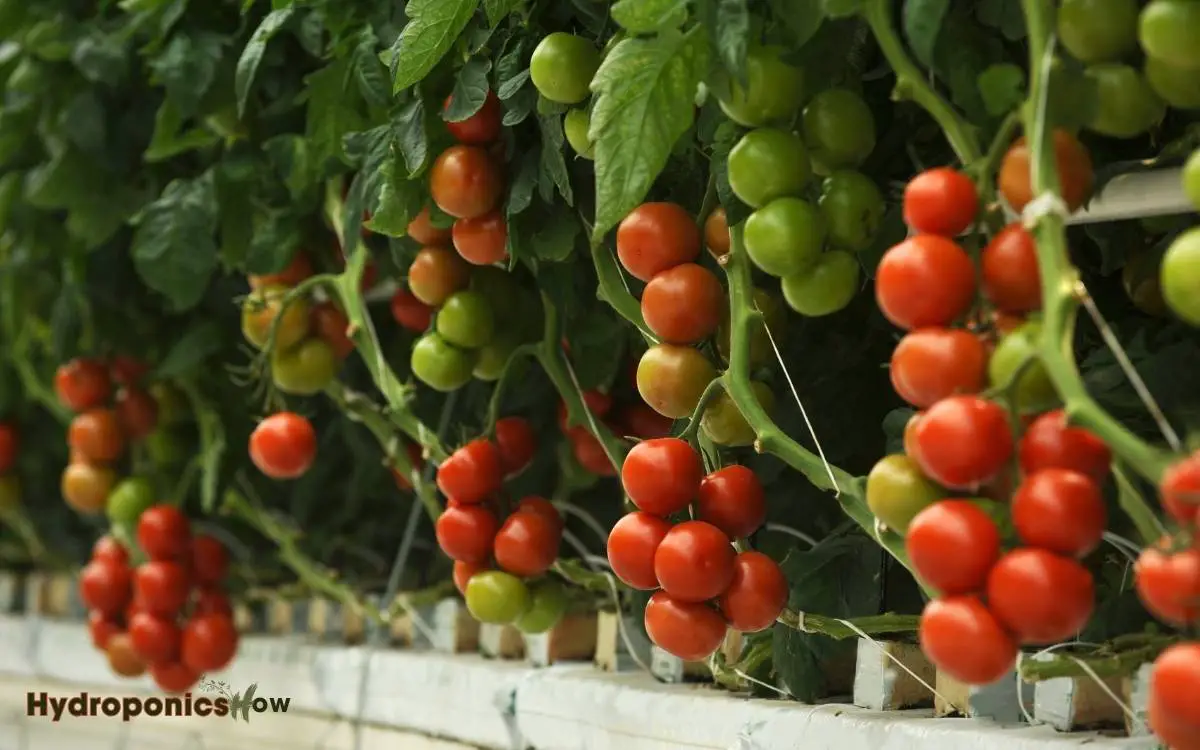
Key Takeaways
Heirloom Tomatoes
Heirloom tomatoes, known for their genetic diversity and unique flavors, are a popular choice for hydroponic cultivation due to their robust growth and high market value.
These varieties, which have been passed down through generations, exhibit a wide array of colors, shapes, and sizes, making them visually appealing and diverse in taste profiles.
Hydroponic systems offer precise control over nutrient delivery, pH levels, and environmental conditions, which are essential for maximizing the yield and quality of heirloom tomatoes. This level of control helps prevent nutrient deficiencies and diseases, ensuring optimal plant health and faster growth rates. Among the best hydroponic systems for tomatoes are deep water culture (DWC) and nutrient film technique (NFT), both of which provide consistent nutrient availability and oxygenation. By selecting the right system, growers can achieve higher productivity and superior fruit quality year-round.
The absence of soil reduces the risk of soil-borne diseases, and a controlled environment minimizes pest infestations.
Essential nutrients such as nitrogen, phosphorus, and potassium can be meticulously balanced, ensuring optimal plant health and fruit production.
Cherry Tomatoes
Due to their compact size and rapid growth cycle, cherry tomatoes are particularly well-suited for hydroponic cultivation, allowing for efficient space utilization and quick harvests.
These small, vibrant fruits thrive in controlled environments, benefiting from precise nutrient delivery and ideal lighting conditions inherent to hydroponic systems.
Cherry tomato varieties, such as ‘Sweet 100‘ and ‘Sungold’, exhibit high yield potential and robust disease resistance, making them ideal candidates for indoor farming.
Additionally, their indeterminate growth habit guarantees continuous production over an extended period.
Hydroponic growers often employ drip irrigation or nutrient film techniques to maintain consistent moisture levels and nutrient availability, which are essential for maximizing fruit quality and overall plant health in cherry tomato production.
Beefsteak Tomatoes
Beefsteak tomatoes, known for their large size and meaty texture, present unique challenges and opportunities when cultivated hydroponically.
These tomatoes require robust support structures due to their weight and significant nutrient management to guarantee ideal growth.
Successful hydroponic cultivation involves precise control over several factors:
- Nutrient Solution: Tailor the nutrient solution to meet the high potassium and calcium demands of beefsteak tomatoes.
- pH Levels: Maintain a pH level between 5.5-6.5 to maximize nutrient uptake and prevent deficiencies.
- Lighting: Provide 14-18 hours of intense, full-spectrum lighting daily to support photosynthesis and fruit development.
- Temperature Control: Keep daytime temperatures between 70-75°F (21-24°C) and nighttime temperatures between 60-65°F (16-18°C) to foster ideal growth conditions.
These measures secure a successful hydroponic harvest of beefsteak tomatoes.
Conclusion
To sum up, hydroponically grown heirloom, cherry, and beefsteak tomatoes each offer unique benefits and challenges.
Heirloom tomatoes provide historical significance and varied flavors, while cherry tomatoes deliver consistent color and compact size, ideal for salads and snacks.
Beefsteak tomatoes contribute substantial size and savory taste, suitable for sandwiches and cooking.
Hydroponic systems support sustainable cultivation, ensuring consistent crop quality and yield.
These techniques triumph in transforming traditional agriculture, advancing both agricultural efficiency and environmental sustainability.

